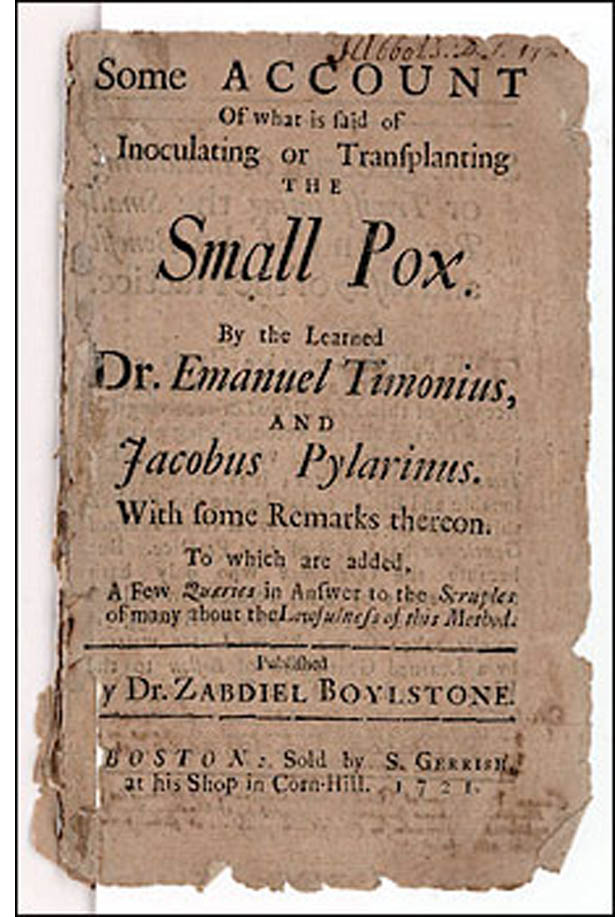Distributed September 17, 2002
For Immediate Release
News Service Contact: Mary Jo Curtis
Contagion and Controversy
John Carter Brown Library hosts exhibition on history of smallpox
The John Carter Brown Library will host the exhibition Smallpox in the Americas, 1492 to 1815: Contagion and Controversy through Jan. 15, 2003. The collection of books, pamphlets and broadsides has been developed in conjunction with the publication of an essay on the history of smallpox by Stanley Aronson, M.D., dean of medicine emeritus, and Lucile Newman, professor emerita of community health.
PROVIDENCE, R.I. — The idea of using smallpox as a weapon of war is not new. As early as 1777 at least one British officer considered the possibility of using germ warfare against rebellious American soldiers.

Documentation of that proposal is just one of the items on display at the John Carter Brown Library Sept. 20, 2002, through Jan. 15, 2003, in the exhibition Smallpox in the Americas, 1492 to 1815: Contagion and Controversy. The collection of printed materials was developed in conjunction with the publication of “God Have Mercy on This House,” an essay about the history of smallpox by Stanley Aronson, dean of medicine emeritus and University Professor of Medical Science, and Lucile Newman, professor emerita of community health, both of Brown Medical School.
The exhibit includes books, pamphlets and broadsides that document firsthand experiences of the Spanish explorers and conquistadors with smallpox, early modern approaches to disease in the Americas in the 16th to 18th centuries, and smallpox in colonial New England, the focus of Aronson’s essay. A portion of the collection chronicles the fierce clashes that developed between proponents and opponents of inoculation when Boston was struck by a severe outbreak of smallpox in 1721. Among the documents on display is a 1733 map, A New Plan of ye Great Town of Boston in New England in America, by John Bonner, which includes a chronology of local smallpox outbreaks as a portion of its legend.
Editors: A digital illustration from the exhibition is available through the Brown News Service.
The exhibition also features items relating to quarantines and other means of preventing the spread of disease, revealed in statutes from several British colonies. At the opposite end of the spectrum, in a volume published in New York in 1777, an enraged British officer proposed shooting the “matter” from smallpox pustules at American soldiers during the Revolutionary War. The lines containing this suggestion were cut out of virtually all copies of the book in an effort to remove the story from the historic record.
Documents from the later 18th century demonstrate efforts to understand smallpox and to convince wary patients of the value of inoculation. Among these is a 1759 pamphlet by English physician William Heberden, who wrote a description of smallpox treatment that could be published and distributed in America at the urging of his friend, Benjamin Franklin, who had lost a son to the disease.
This exhibition and the publication of Aronson’s essay were funded in part by the Carl Bridenbaugh Memorial Fund at the John Carter Brown Library, an independently funded and administered institution for advanced research in history and the humanities, located at Brown University since 1901. The exhibition was prepared by Charles Beatty with the assistance of the library staff. The John Carter Brown Library is open 8:30 a.m. to 5 p.m. Monday through Friday and 9 a.m. to noon Saturday. For more information, call (401) 863-1262 or 863-2725.
######





